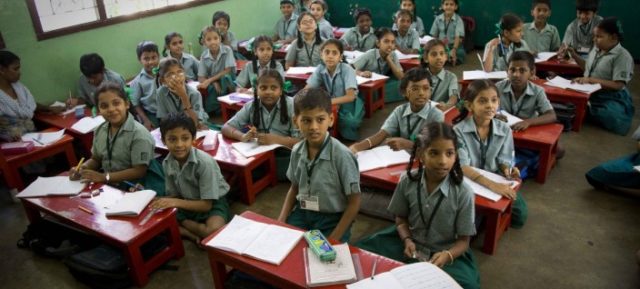It is a fact nobody can dispute that India has made great strides when it comes to the education levels of its population. From independence, when the literacy rate was 18% to the present day, where statistics show almost 75% of Indians are literate (and this, despite the population continuing to increase) certainly shows that much progress has been made. But while basic literacy is a cause for cheer, at the same time, the picture is less rosy when we look at higher education as the measure. School dropout rates are still too high, with 4.34% of primary school-goers and 17.89% of secondary school-goers dropping out without obtaining the relevant pass certificate (MHRD report, 2014-15). Naturally this also translates to a lower enrolment and passout rate at the college level.
While there are regional variations, the reasons for this generally fall within one of the following categories:
- School Is too far
- To supplement household income
- Education not considered necessary / not of good quality
- To attend domestic chores
At a college level, the primary reason for dropouts tend to change, with the emphasis being on:
- Cost
- Non-availability of desired stream
- Difficult of course work
Given that education is one of the most important inputs for the growth of a nation and the welfare of its populace, an objective which every government should consider its primary goal, what can be done to reduce this dropout rate and make education more widely accessible?
At the school level, measures need to be taken to make education more accessible. In terms of physical distance, a heavy investment in preparing primary school infrastructure is necessary. While measures like the Right to Education Act have been useful in urban areas, for rural areas where distances are longer, the government might do well to invest in providing transportation to and from schools. Availability of school buses will make it much easier – and safer – for children to travel to schools especially if they are not close by.
Another factor to consider is that with a large number of children, especially in the 10-15 year range, drop out so as to ‘supplement household income’, in other words, they are put to use as child labour. This is where the line becomes blurred, because a rural family expecting their children to contribute to running the family farm is very different from sending children off to work as household help or factory labour. In any case, a carrot-and-stick approach of strictly enforcing child labour laws, while at the same time incentivising good students with a education scholarship would go a long way towards curbing this reason for dropouts.
As far as improving the quality of education is concerned, this is necessarily a long-term goal, and applies across levels and geographies. A greater investment in infrastructure and human resources by way of paying more to teachers and investing in better facilities would certainly make it more desirable for even poorer children to want to complete school.
The last reason for children dropping out is found mostly to happen for girl children of a certain age, clearly indicating that it is not only ‘domestic chores’ but also early marriages that are a reason for dropping out of school. Here again a system of incentivising continuing education for the girl child (Beti Padhao, Beti Bachhao) and enforcing laws about marriage age would be a good start.
At higher levels of education, the causes change and so would the solutions. Lack of quality public education infrastructure in India has led to mushrooming of expensive private universities. Add to this corruption, a system of ‘donations’ which are really bribes and overemphasis on standard testing as eligibility criteria has led to a situation where the deserving rarely get the education they deserve. Rooting out corruption and expanding the availability of elite college seats is the only way forward. While the government is taking steps to expand the availability of seats in engineering courses, the fact is that this needs to happen for a lot more specialisations so that a child with aptitude is not denied the right to an affordable education.
For a long time, we have spoken about India’s “demographic dividend”, but it is only by a sustained and serious investment in the education of India’s youth that this dividend can be derived.
































